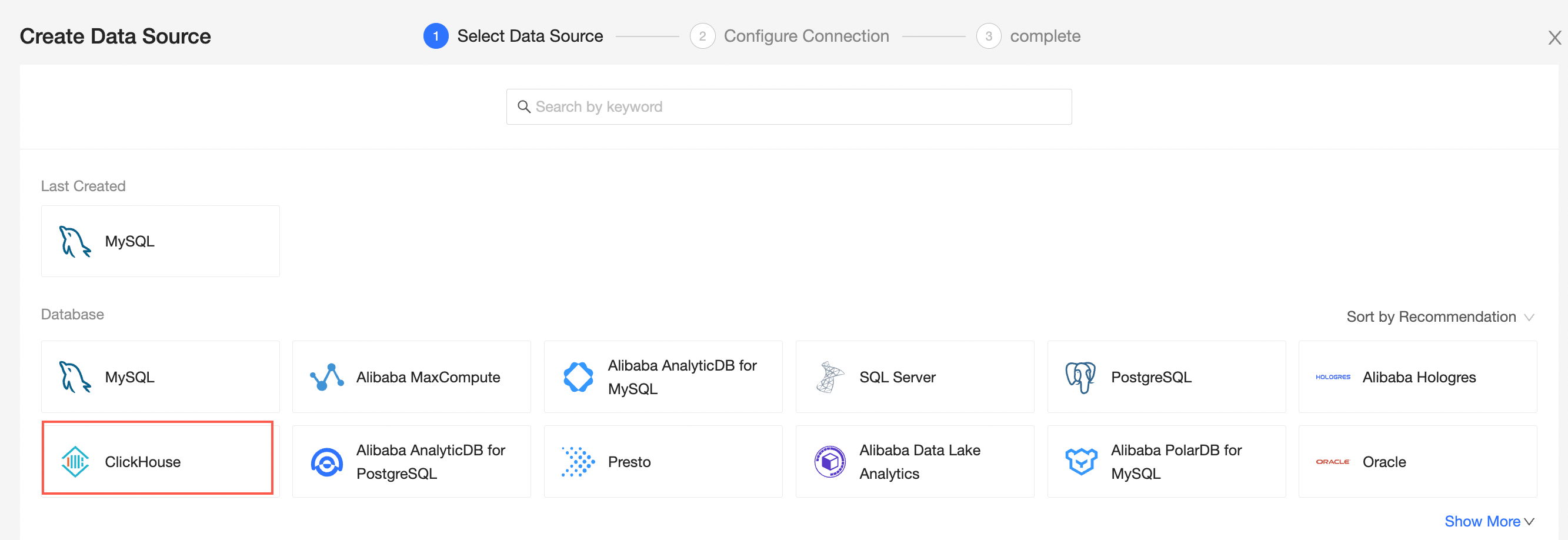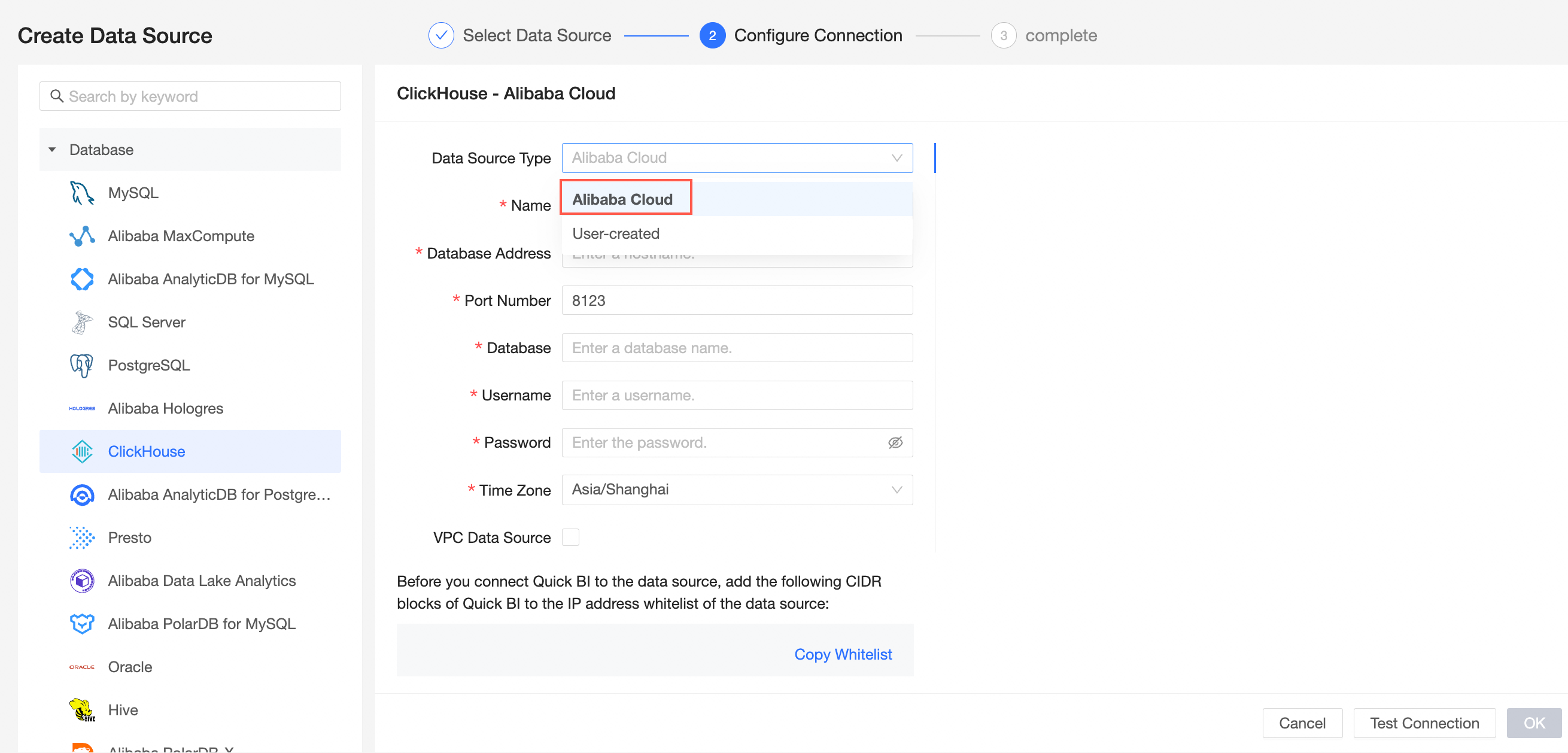Add a ClickHouse data source to connect the ApsaraDB for ClickHouse database to the Quick BI. After the connection is established, you can analyze and display data on the Quick BI. You can connect a Quick BI to an ApsaraDB for ClickHouse instance over the Internet or a virtual private cloud (VPC). This topic describes how to add an ApsaraDB for ClickHouse data source.
Prerequisites
An ApsaraDB for ClickHouse cluster is created. For more information, see Create an ApsaraDB for ClickHouse cluster.
Background information
If you are using an ApsaraDB for ClickHouse database, you can add an ApsaraDB for ClickHouse data source when you connect the data source to the Quick BI for data analysis.
When you connect an ApsaraDB for ClickHouse data source to a Quick BI, you can use the Internet or Alibaba Cloud VPC to connect and access data.
Limits
Only workspace administrators and developers can add data sources.
Only Advanced Edition and Quick BI Enterprise Standard allow you to add ClickHouse data sources.
Procedure
Add the elastic IP address (EIP) of the exclusive resource group for Data Integration or the CIDR block of the vSwitch with which the resource group is associated to the IP address whitelist of the data source that the resource group needs to access.
Before you connect to the ApsaraDB for ClickHouse cluster, you must add the Quick BI IP address Quick BI the IP address to the whitelist of the ApsaraDB for ClickHouse cluster. For more information about how to add an Alibaba Cloud ClickHouse whitelist, see Configure a whitelist.
Add a Hologres data source and verify that the data source can be connected.
After you log on to the Quick BI console.
Perform the steps that are shown in the following figure to add an ApsaraDB for ClickHouse data source.
Go to the Create Data Source page.
Select ClickHouse Data Source.

Select Alibaba Cloud for Data Source Type.

In the Configure Connection dialog box, configure the following settings based on your business requirements.
Component
Description
Display Name
The name of the data source. The name is displayed in the data source list.
The name cannot contain special characters or start or end with spaces.
Database Address and Port Number
The public endpoint where the ClickHouse database is deployed. If you use a VPC data source, you must enter the internal endpoint and port number of the database.
Log on to the ApsaraDB ClickHouse console. In the Network Information section, obtain the database address. Example: cc-xxxxxxxxxxxxxxxxxx.ads.rds.aliyuncs.com.
Database
The custom name of the database. The name is specified when you create the database.
Username and Password
The username and password that are used to access the database.
Time Zone
The time zone where the ClickHouse database is deployed.
SSL
If SSL is configured for the destination data source, you can select SSL to protect data security.
VPC data source
Select VPC Data Source and set the following parameters:
AccessKey ID: the AccessKey ID that is used to purchase the instance. For more information, see Obtain an AccessKey pair.
AccessKey: the AccessKey secret that is used to purchase the instance. For more information, see Obtain an AccessKey.
Instance ID: the ID of the ClickHouse database.
Region: the region in which the ClickHouse cluster is deployed.
Initialize SQL statements
The SQL statement that is initialized and executed after each data source connection. Only SET statements are allowed. The statements are separated by semicolons and line breaks are not allowed.
Click Test Connection to verify that the data source can be connected.

After the database passes the connectivity test, click OK.
What to do next
After you add a data source, you can create a dataset and analyze data.
Add a table in the ClickHouse database or a user-created SQL statement to the Quick BI. For more information, see Create and manage datasets.
You can add charts and analyze data. For more information, see Create a dashboard and Overview.
You can drill down and further analyze data. For more information, see Drilling, filter interaction, and hyperlink.